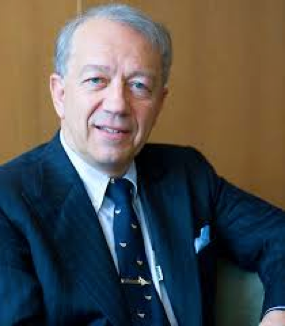
Pekka Puska:
And How He Changed Finland Through Nutrition and Community Health
In an excellent blog post written by Taylor Adams earlier this semester, Dan Buettner’s ‘blue zone’ study and his findings were well laid out. After Buettner conducted these studies around the world, his goal became implementing these ‘blue zone’ solutions in communities in the United States. His biggest inspiration on how to achieve American ‘blue zones’ is the topic of this post.
Most professions, sports, hobbies, and other walks of life have their fair share of heroes. In nutrition and public health, one particular hero resonates deeply with me. His name is Pekka Puska, and he is the man who saved North Karelia, Finland from a public health crisis many were willing to write off as a lost cause.
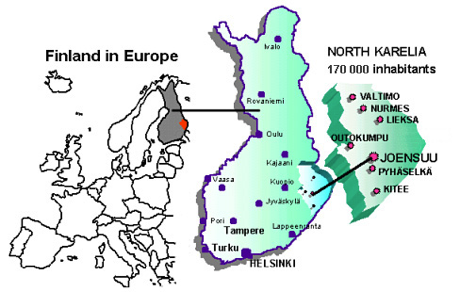
In 1972, North Karelia, Finland a region made up of 170,000 Finns, had the unfortunate distinction of having the highest rates of heart disease in the world (Buettner, 2015; 87-88). Dr. Puska, a 27-year-old with a medical degree and a master’s degree in social sciences was assigned to identify the problem and fix it.
Puska’s first task was to define the nutritional problem and identify the target population (Boyle, Holden, 2013; p.42). The problem turned out to be a diet based around animal fats, animal products, and salt. Typical staples of the North Karelian diet were butter, high fat milk, and heavily salted meats. Vegetables and fruits were conspicuously absent from the diets North Karelian inhabitants. As well as poor diets, more than 50% of the male population smoked cigarettes.
Over the course of the next five years, Dr. Puska launched a campaign to educate the population, build a coalition of ambassadors and stakeholders, and create change by working through existing health and economic infrastructure. He and his team tirelessly interviewed and educated community members about the causes of heart disease, how to incorporate vegetables and fruits into their diets, alternatives to using butter, as well as the health risks of smoking and how to quit. While educating community members, they simultaneously reached out to the local businesses and food industries and worked with them on ways to improve the health of their products while actually making more profit. An example of a profitable initiative that Pekka helped to establish was getting a local sausage maker to replace a portion of the pork fat in his sausage with local mushrooms. This small change in sausage production drastically increased the health and nutrition of the sausage while also reducing the price of sausage production (Buettner, 2015; 95). Pekka realized he could recruit local industry to drive his public health programming by incentivizing change.
Once people were educated and had the healthy choices available, the rest of the plan fell into place. Dr. Puska effectively transformed the environment of North Karelia into an environment that made the healthy options the easiest options. Instead of lecturing the community members about self-discipline or personal responsibility, he found community leaders and stakeholders who could see the need for change and could alter their environment to fit the needs. In small terms, this meant changing a pork dish cooked with high fat pork and salt into a dish with leaner pork, less salt, and lots of vegetables.
This dish transformed into this dish
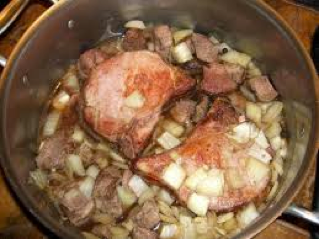
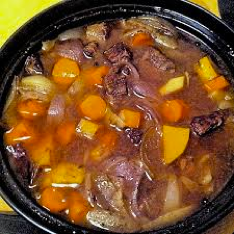
Ultimately, the biggest magic trick Dr. Puska was able to accomplish was: improving the lives of thousands without forcing large scale interventions on the target population. By the end of his intervention in North Karelia, all of the following accomplishments were achieved with very few people in North Karelia even realizing they had made lifestyle changes (Buettner, 2015; 99):
- From more than 50% of the male population smoking to less than 20%
- Consumption of high fat milk went from 70% to less than 10%
- 60% of families now cook with vegetable oil instead of butter
- Less than 5% use butter on bread compared to 84% in 1972
- Salt intake fell by 20%
- Vegetable intake increased threefold
- Average cholesterol level dropped by 20%
- And heart disease death rate among working-age men fell by 85%
(Buettner, 2015; 99)
Even more impressively, Dr. Puska’s intervention and approach was used as a model for all of Finland with equally impressive results.
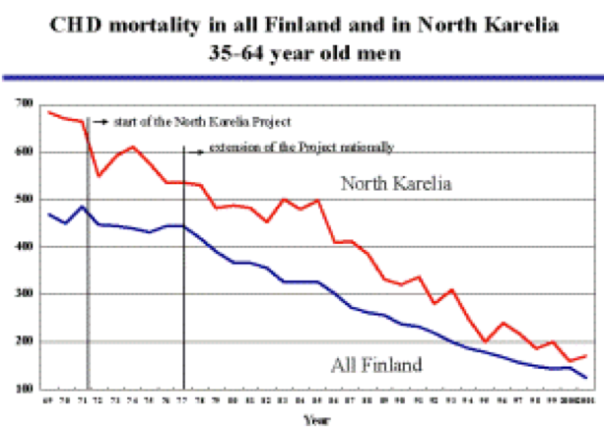
As someone going into the field of nutrition as a Registered Dietician with a background and strong interest in public health and community health, Dr. Pekka Puska is a model of effectiveness and inspiration.
You can read more about his unprecedented public health accomplishment in Dan Buettner’s book, Blue Zones Solutions: Eating and Living Like the World’s Healthiest People as well as in The Atlantic article “The Finish Town that Went on a Diet,” (http://www.theatlantic.com/health/archive/2015/04/finlands-radical-heart-health-transformation/389766/).
References:
Boyle, M.A., Holben, D.H. (2013). Community Nutrition in Action: An Entrepreneurial Approach. 6th Edition. Belmont, CA: Wadsworth Cengage Learning
Buettner, D. (2015). Blue Zones Solutions: Eating and Living Like the World’s Healthiest People. Washington D.C.: National Geographic
Blog by: Luke Shealy